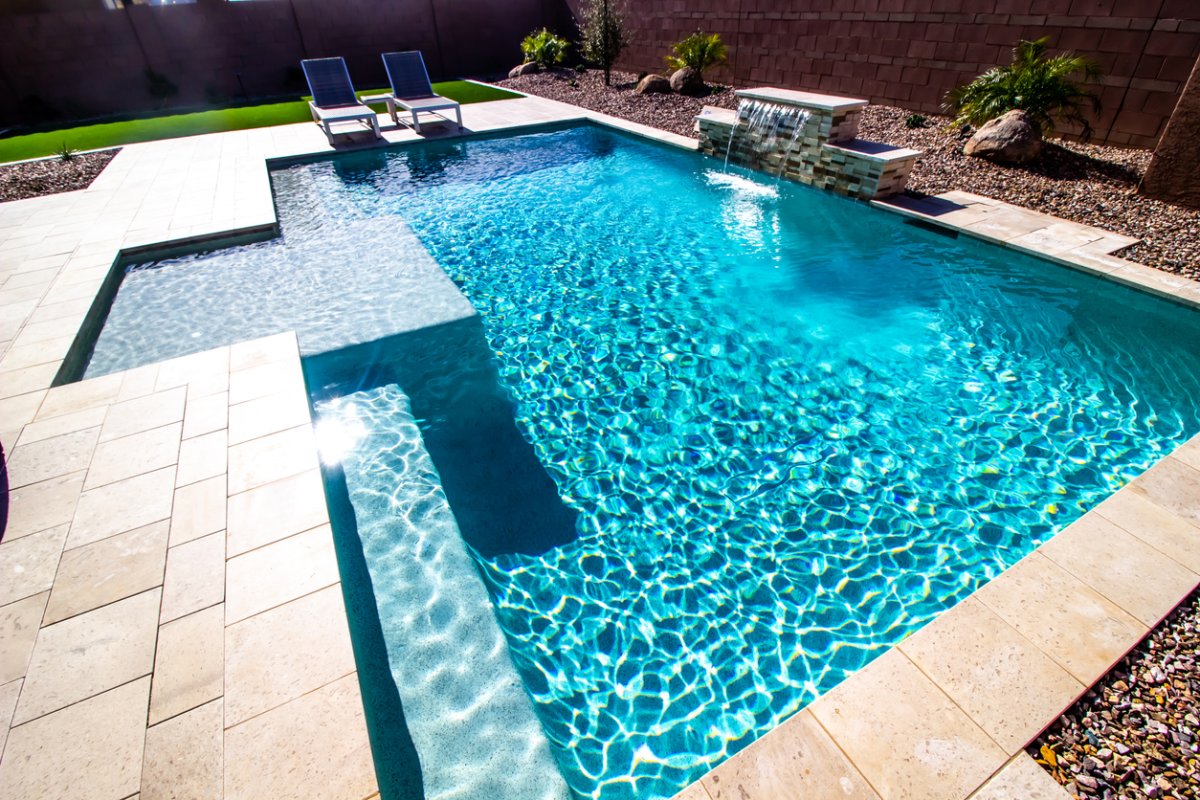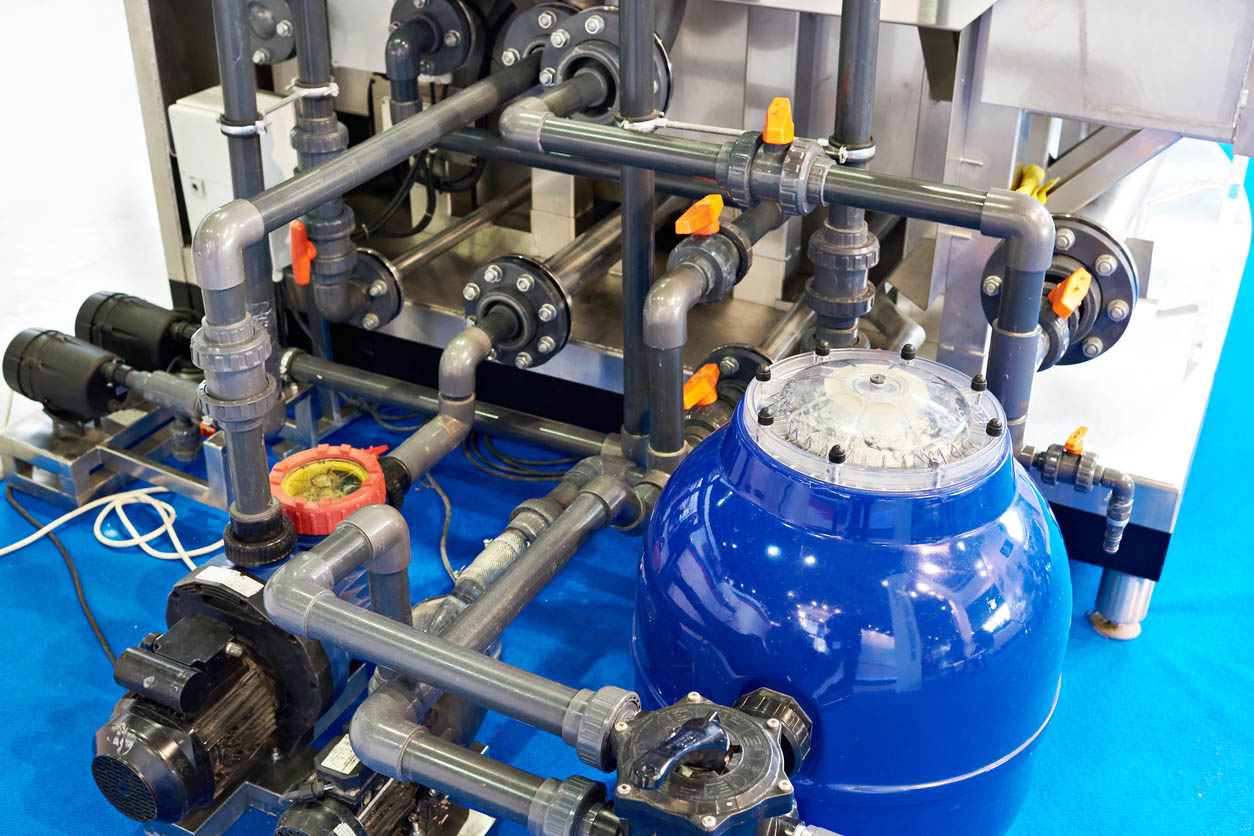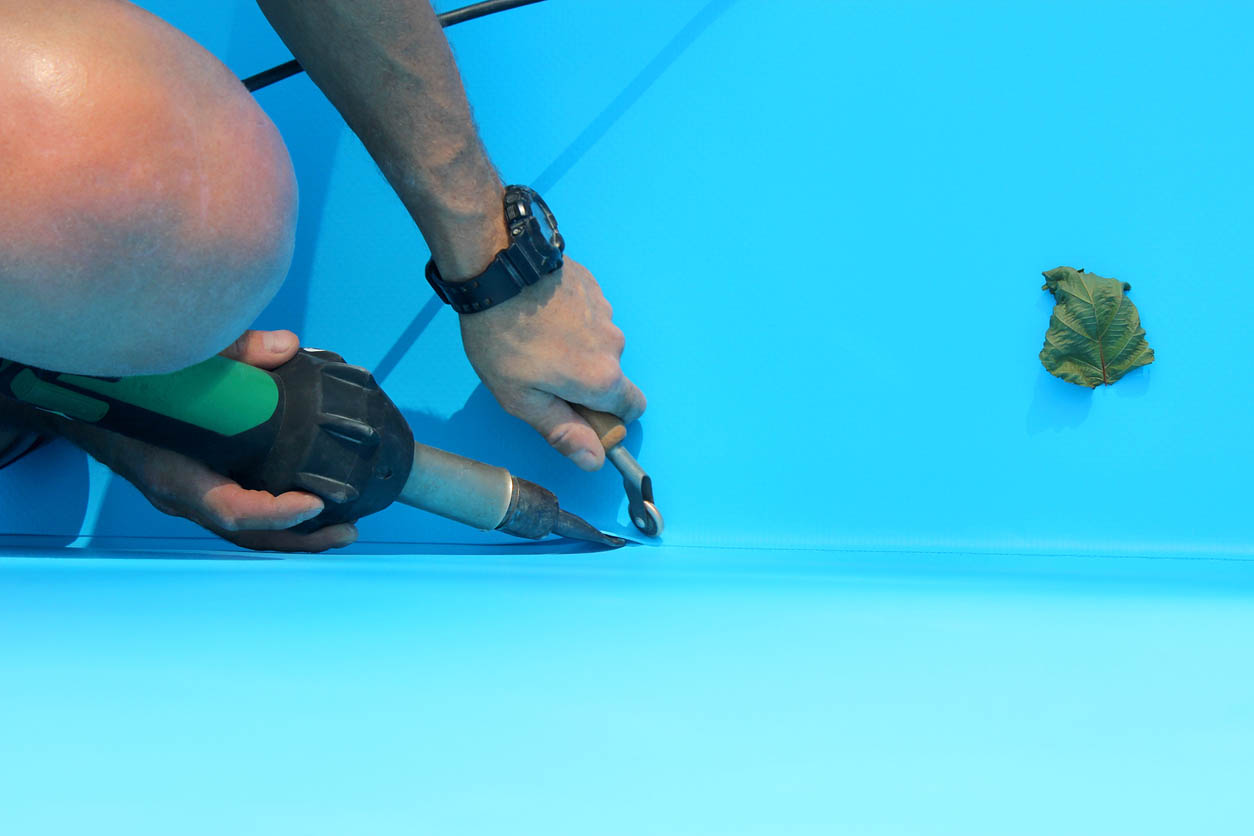

We may earn revenue from the products available on this page and participate in affiliate programs. Learn More ›
Project Overview
- Many times, a pool leak can be identified by looking for evidence around the pool or on the equipment pad.
- There are two main ways to test for a pool leak: a bucket test to check for a leak, and a dye test to confirm the leak’s location.
- Minor leaks may be repairable by a DIY patch, but larger or more severe leaks are best handled by an experienced pool maintenance and repair professional.
Whether a pool was just put in by one of the best pool installation companies, or it is several years old, the thought of having a leaky pool can fill almost any homeowner with dread. Fortunately, some water loss in a pool doesn’t automatically mean it leaks: evaporation and splashing are common culprits. If these reasons can be ruled out, then it’s time for a homeowner to figure out where the leak is coming from. Pooling water in the yard, cracked tiles or concrete, and varying chemical levels are common signs that there’s a pool leak—and a pool leak can be trickier to fix than an appliance such as a refrigerator leaking water.
Leaks aren’t just an annoying or inconvenient pool maintenance cost; if left ignored, a leak in a pool can lead to sinkholes, greater pool damage, and foundation shifts. Plus, a persistent pool leak will also drain money day by day as the water is replaced. While homeowners can attempt to detect leaks in pools themselves, a pool technician will definitely know how to find a leak in a pool and make it possible to get the next pool party scheduled.
Time required: 1 to 3 days
Difficulty: Intermediate
Estimated cost: $10 to $40
Tools & Materials
Bobvila.com may earn a commission from purchases made through these links.

Before You Begin…
Pool leak detection can be challenging and even dangerous if the leak is near any electrical wiring. While many homeowners can handle the more straightforward methods for detecting a pool leak, calling a pro may be the best option to avoid an accident. As always, safe water practices are the best course of action, so if any of these methods feel overwhelming, it’s advisable for homeowners to leave it to a pro.
Tips on Finding a Leak in a Pool
- Inspect external pipes or plumbing for signs of water.
- Note where excess water appears to be pooling in the yard or on the concrete.
- Rule out normal evaporation first by using the bucket test method (see Step 3).
- Check for inconsistent chemical levels, as this may indicate a pool leak.
- Use food coloring to confirm a suspected leak.
Safety Considerations
- Avoid touching wet electrical wires to prevent shock.
- Don’t attempt any pool repairs if an electrical storm is in the forecast.
- Work carefully around the edges of the pool to avoid accidentally falling in.
- Keep an eye on any children and pets near the pool area while working.
- Use swimming goggles to protect your eyes from the pool chemicals while doing the underwater dye test (see Step 4).
STEP 1: Look for evidence of a leak around the pool.
Water evaporation is normal for pools, but if it looks like more than a half inch of water is being lost each day, then it’s likely there is a leak somewhere. Other signs of a pool leak include swampy areas in the grass or on the pool deck and conspicuous cracked tiles or concrete. It may also be challenging to maintain appropriate chemical levels, as the chemical concentrations will change a lot when fresh water is being added to the pool. If the pool is being filled often, it may even be significantly increasing water bills.

STEP 2: Check for leaks at the equipment pad.
The equipment pad is another area to check for leaks. If a connection seal has broken or a part has failed, there could be water leaking into the equipment pad. Water may not be immediately visible, so the area will need to be checked consistently for a few days. A pool pump leaking is a common problem, but leaks can also come from valves, filters, or heaters. Be extra cautious when checking this area to avoid accidentally getting shocked by an exposed electrical wire that may be wet. For those who would prefer to leave this to a professional, a pool inspection can cost as little as $125 and may be a safer option.
STEP 3: Perform the bucket test to see if it’s a leak or just evaporation.
An effective way to see if the pool water is evaporating or the pool is leaking water is to do a bucket test. To do the test, homeowners will need to fill a 5-gallon bucket with pool water and mark the top of the waterline with some painter’s tape or duct tape. With another strip of tape, they will mark the pool water at the top of the waterline. They’ll need to leave the bucket next to the pool for a day or two, then measure the difference in the water levels between the two tape lines. If there’s a significant difference in water levels, then a pool leak is the most likely culprit, not evaporation.
STEP 4: Use a dye test to confirm a leak’s location.
Once evaporation has been ruled out and it’s been determined that there is a leak, some food coloring or a special pool leak detection dye can be used to locate the leak. Since it may be necessary to swim to the bottom of the pool, homeowners may want to wear goggles to see what’s happening. Around any integrated parts or plumbing fixtures, homeowners will want to squirt a small amount of food coloring or dye in the water. If there is a leak around a skimmer, pump, or drain, the dye will naturally flow toward it and be sucked out. It’s easier to watch the dye get pulled toward a leak if the water isn’t churning, it may also be helpful for the homeowner to use a snorkel to breathe while watching under the water. This same method will still be effective for homeowners who are wondering how to find a leak in an above-ground pool or an inground pool.
STEP 5: Repair the leak with a pool patch, if possible.
Leaking pool repairs can be a DIY project for homeowners who feel confident in their abilities. Leaks are often repaired using a pool patch. Most leak repair kits and patches can be applied without draining the pool; however, the patch can also be applied to a dry surface if needed. Dirt or buildup will reduce the patch’s stickiness, so it’s a good idea for the homeowner to wipe or clean the area first (if there is significant grime or algae, they’ll want to consider calling one of the best pool cleaning companies). Then they’ll place the patch securely over the leak and press out any remaining air bubbles. It’s recommended that the patch be several inches larger than the crack for the best results. Pool patches can mend a leaking pool for several years at most, but they are generally considered to be a temporary fix.

STEP 6: Hire a skilled pool expert to repair the leak.
Even homeowners who understand how to maintain a pool may need professional help occasionally. If it’s still unclear where the leak is located (or if it will be difficult to repair), it’s a good idea for the homeowner to call a local pool service company. Searching for “pool leak detection near me” or “pool repair near me” will return some helpful results. Pool experts are also the best-equipped people to repair a leak in most pools.
If the issue is a leaky liner and the vinyl pool liner or Intex pool liner is older, pool liner repair might not be possible, and replacement might be the best option. On average, pool liner replacement costs around $2,327. If there is hidden water damage near the equipment pad where electrical shocks could occur, such as pool filter leaking, a professional can make sure the job is done safely. If the pool is leaking in the underground piping, homeowners will want to leave the hard work to a pro who knows just how to identify the problem pipe and repair it. If the pool isn’t already covered, it may also be worth a homeowner considering one of the best home warranties for pool coverage such as Choice Home Warranty or American Home Shield to help cover future repairs.
While most water loss in a pool happens because of evaporation or excessive splashing, the pool may have sprung a leak. Using the tried-and-true bucket method or a food coloring test will help homeowners identify a leak and where it might be. Those who are uncomfortable spending time underwater to find a leak in a pool or whose attempts haven’t been successful may find hiring a pro to be the best course of action. Water safety is always important to practice around pools, and a pro can make sure that a leak is identified and repaired in the safest, most effective manner.
